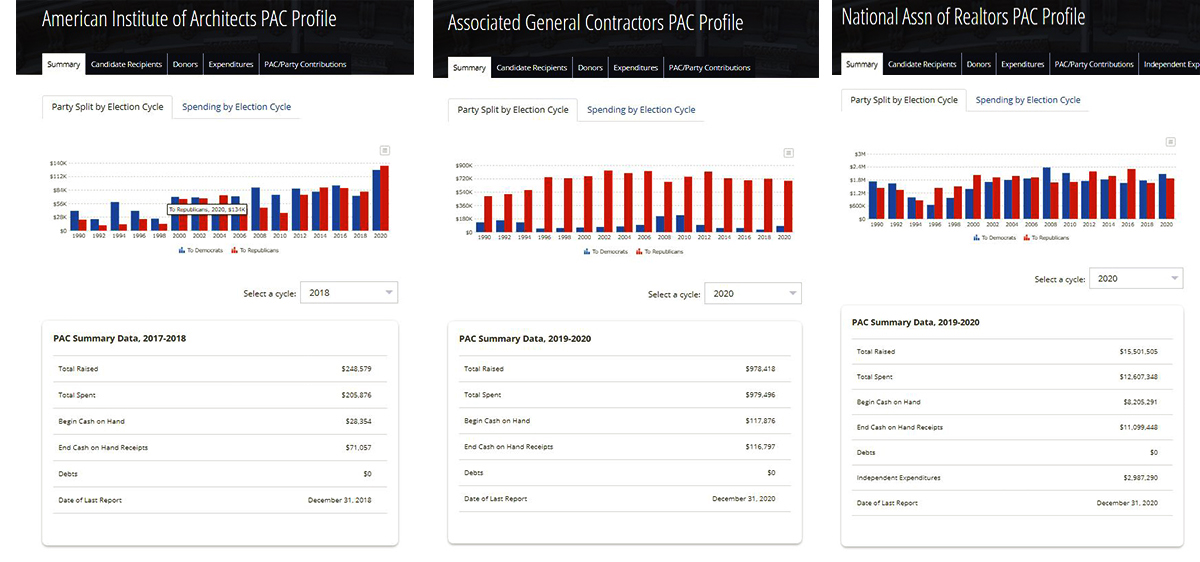So the podcast this week and a state architects’ advocacy day got me thinking about numbers as they relate to our profession as compared to comparable professionals. So since I am a big fan of data, I went to round some up! I want to start by examining some numbers about our glorious chosen profession with other professions and then (hopefully) make some sensible connections from those stats. All this data is based on US statistics; I could not do this for the entire world!
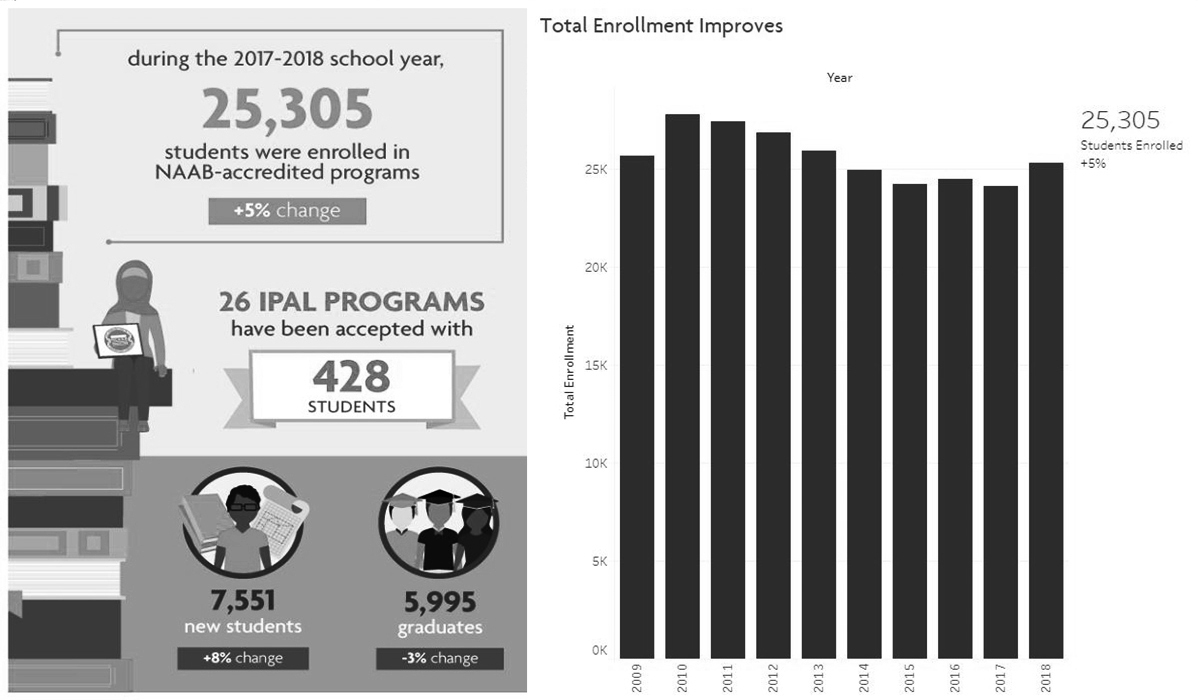
What do I mean by the Architecture Profession in Numbers? So let’s look at education first. How many architecture students are there in the US? How does this compare to law students, med students, or engineering students? Well, the short answer is that there are fewer students in architecture than in those other areas of study. How much is the bigger question? In 2018, there were about 25,000 students in architecture programs across the US. This is distributed across 136 institutions of higher education and within 156 accredited programs. This data is from NCARB and NAAB. During that same year, there were 130,000 law students at 203 accredited law schools and roughly 91,000 medical students in 154 programs. Engineering students peaked out at 622,500 across 393 institutions. But this number is all forms of engineering just for the record. 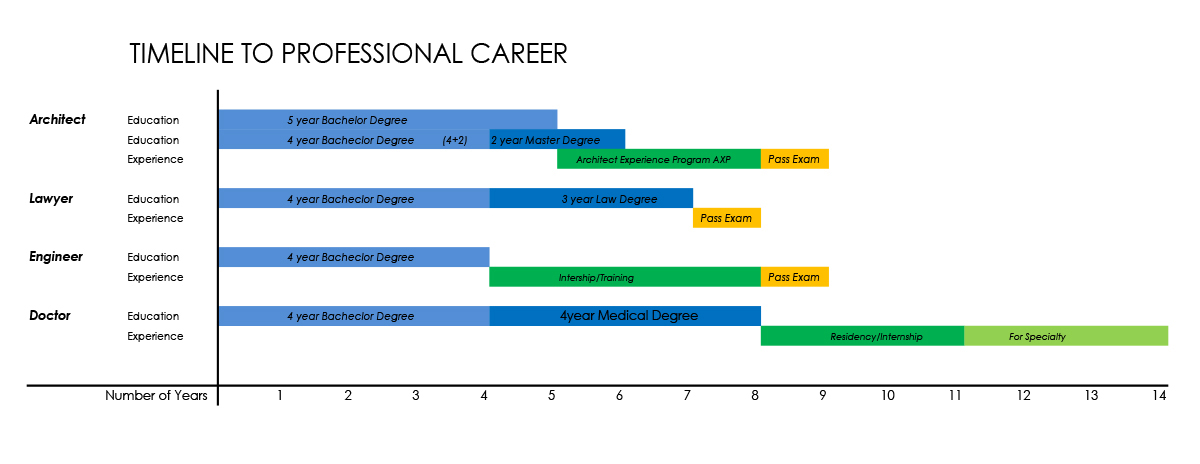
So that puts it into perspective a bit, but let’s look at one more set of numbers for the education process. There were about 8,500 degrees awarded in architecture in 2017. Also in 2017, there were about 19,500 medical degrees, 35,500 law degrees awarded, and 191,300 engineering degrees handed out. The most recent data I could find for architect graduates in 2019 was below 6,000 just as a reference point – that number seems to have dipped according to NCARB.
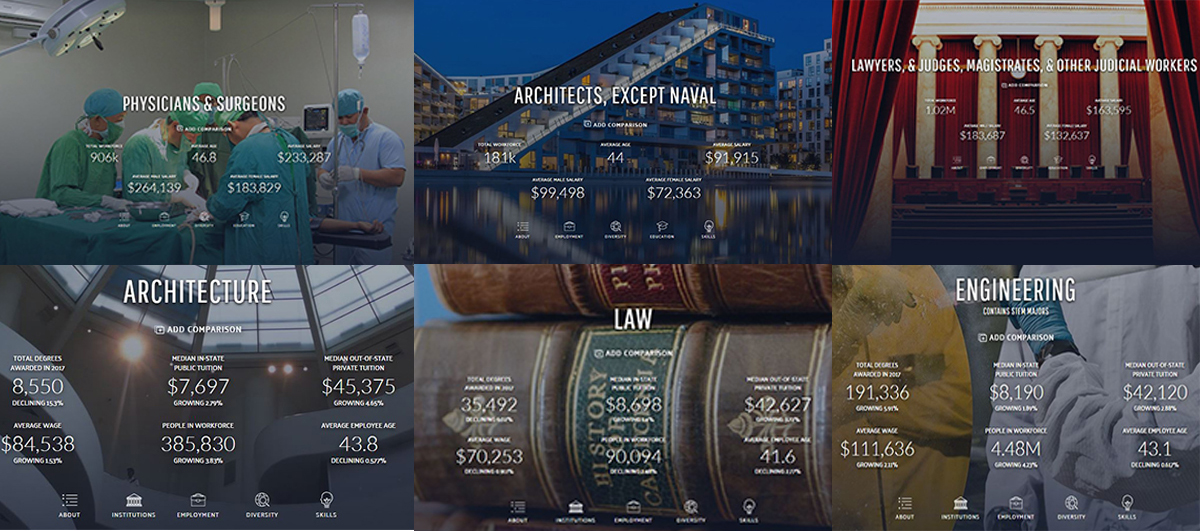
Now that we are done with the education, let’s shift to the workforce. The workforce numbers follow similar patterns as you might think. The main difference (I think) is the large number in the healthcare industry, but that number was difficult to narrow down – you can see some of those breakdowns in the data images. So this really follows the same pattern. Just a few notes here on our chosen profession of architecture. NCARB has the number of licensed architects in the US around 130,000, give or take, and AIA has about 90-95,000 members depending on the year. So you can calculate that into the workforce numbers. These numbers include a large amount of “others” that it takes to make the profession of architecture work as it should. I am not placing any judgment on those numbers; I just think it is interesting to note.
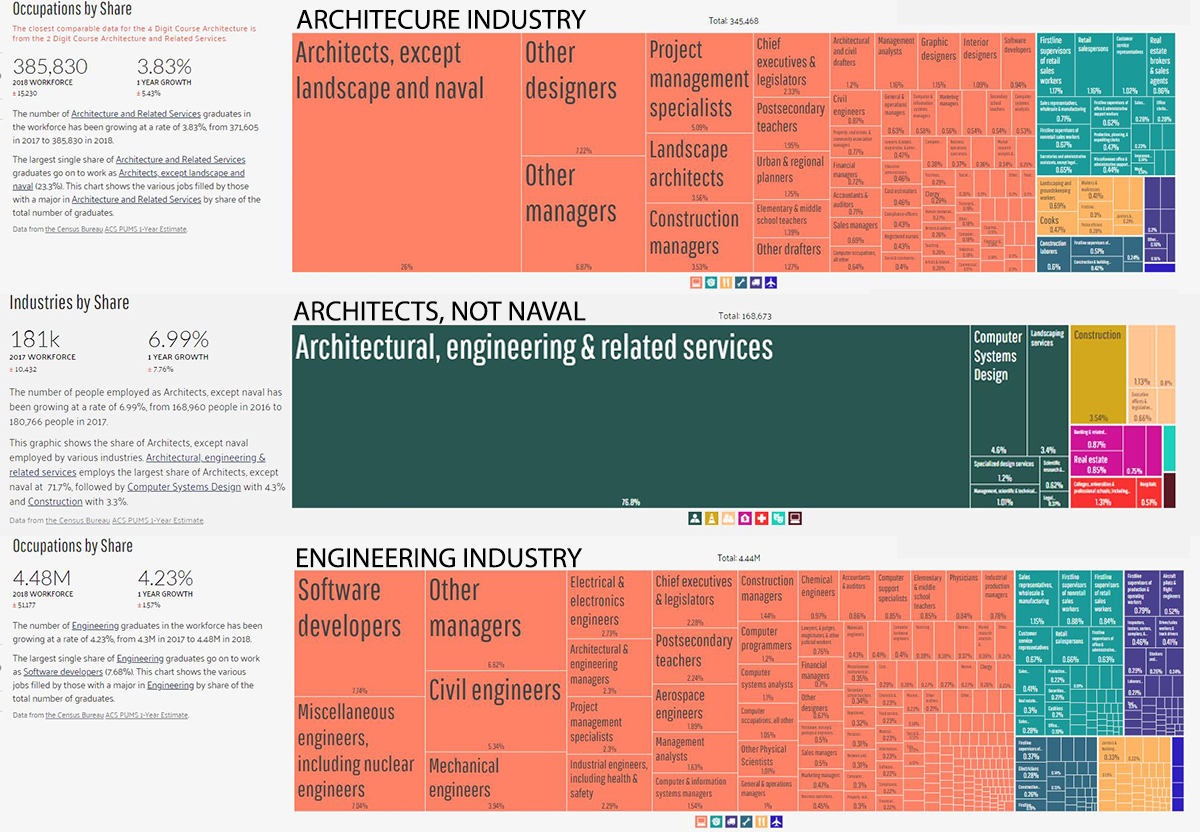
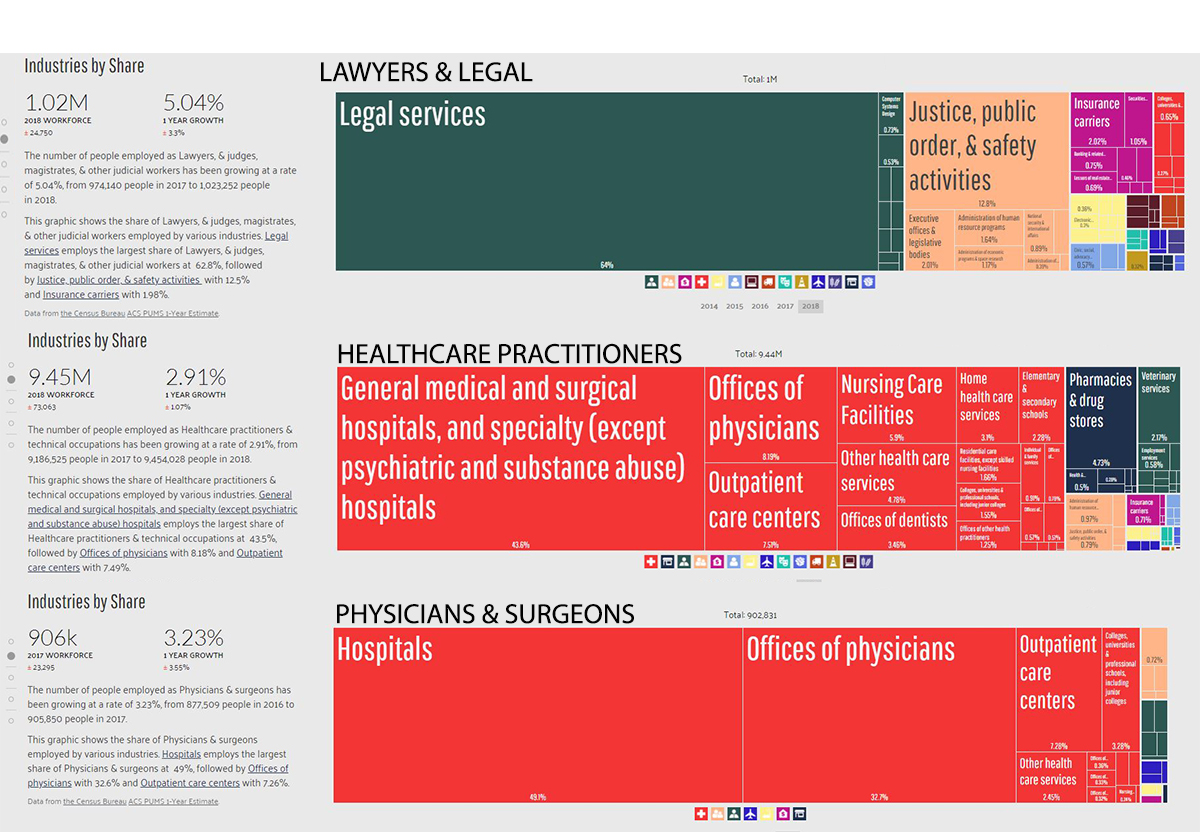
So are you still awake? Or has all this number-crunching made you sleepy? Well then, on to another set of numbers. This one will possibly blow your mind, or maybe not …. but we are going to look at political spending for a bit. Now I will not bore you with all the minutiae of this data and what it really means to the profession of architecture (I will touch on it later) but I will summarize. Due to our numbers, and I dare say personalities, we are not a big player on any political scene when it comes to monies and clout. That is all well and good except for one thing. Others in our industry are big players in that arena. And at times, they can “help” make the rules and it may not benefit our profession. I am a huge advocate of being involved in government affairs for my profession. I am not highly political otherwise really. But for this, I am all on board … but the real scary part here is that many others in the AEC industry have A LOT more money to buy influence than we do. I mean a gargantuan amount more. So just look at the numbers. The AIA PAC, which is our only political committee, raised around $250,000 in the 2018 cycle. The AGC brought in about $980,000 in that same period. The National Association of Homebuilders funded $3,000,000 in that period. So those dollars can be used to sway legislation towards their causes and interests, which do not always align with those of us in architecture. On a side note, the realtors beat all in our industry by a long shot with $13,500,500 in that same period.
That should blow your mind.
Ok… Ok. So enough with the data.
What do I think this all means and why am I even spending the time to write about it? Well, I think it all translates into a level of awareness, understanding, and appreciation for the practice of architecture. Simply put, there are so few of us spread around the country compared to other similar professionals that we tend to be misunderstood at the least. In my opinion, this leads to our loss of value and agency as professionals. People just do not know about our skill set, capabilities, and knowledge due to our smaller numbers in society at large. Are you familiar with what a marine botanist does as a profession? It IS kinda about the numbers quite honestly. Architects seem to be in a constant struggle as a profession to show our value, prove our worth, and have a louder voice. I think so much of this stems from the numbers above. I am not certain there is a solution to this condition, but I think it could be, just maybe, a simple solution. That solution could be that there needs to be more of us in the world. We need to attempt to increase our presence in the workforce. I know this seems like a crazy idea as I understand the struggles to get work, keep work, and make money as an architect in the US. But I think there is also a valuable benefit of increasing our numbers… we might be able to show our value to more people and hopefully, that means an increase in demand. Granted I am not saying this is even possible. As we all can attest, not everyone is cut out to be an architect. But I do think there are more of us out there to be found and cultivated. So maybe, just maybe, the next time someone asks about being an architect, make certain you put a positive spin on it and make it seem like it’s the greatest thing to be; especially if it is a younger person. We need them.
Until Next time,
Links for more data:
Data USA Public PAC data NCARB by the Numbers

